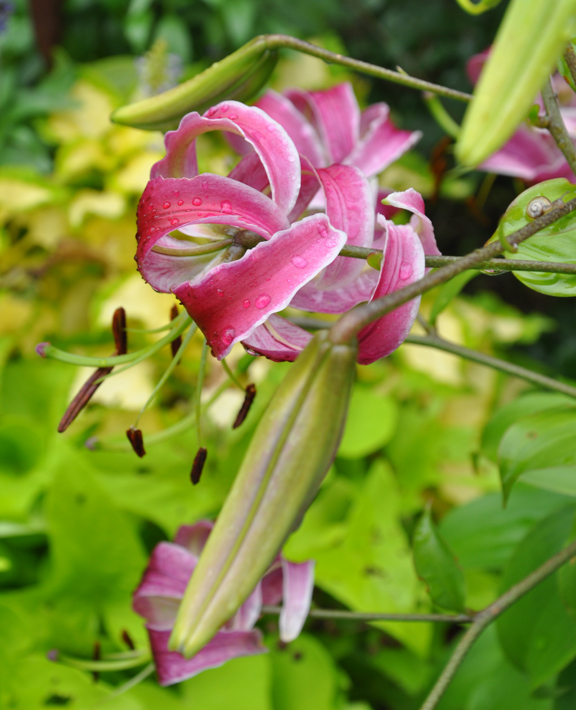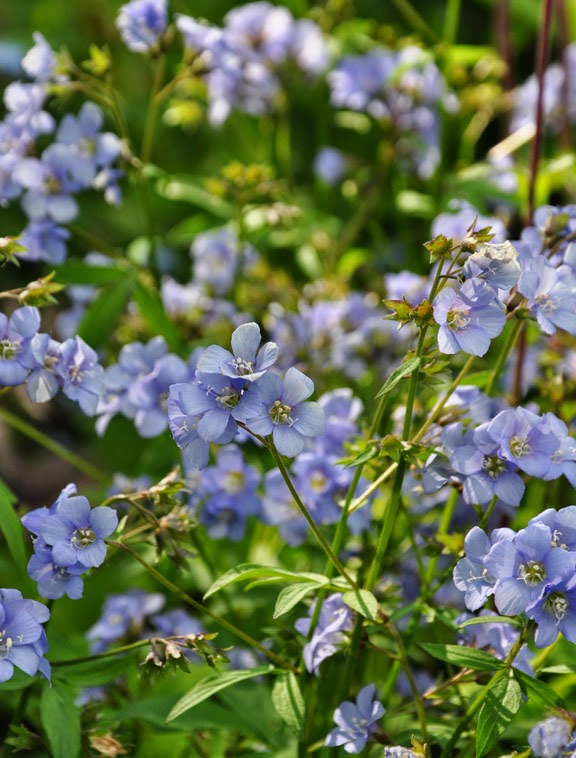A photo taken by my dear husband.
When my father called me on Tuesday morning to wish me a happy new year, he told me he had celebrated into the night at a party with live music, singing and dancing. Myself, I fell asleep on the coach shortly after dinner. Goodness, my 93-year-old father has put me to shame!
When I woke up around nine, I found my husband had already done the dinner dishes. How grateful am I that I have a husband who does the dishes all on his own even after a long, hard day at work! To close our wild New Year's Eve, we grabbed our umbrellas and took the dogs for their nightly walk. The drizzle was so heavy it might better be described as rain. Mild temperatures and rain on New Year's Eve in Ontario. How very odd that seemed! For our walk, the boys wore their sporty red raincoats because they'd be drenched otherwise. Even so, I still had to dry them with a towel when we got back.
We finally crawled into bed sometime after eleven. My husband drifted off to sleep almost immediately, but I lay awake long enough to hear the first of the fireworks at midnight. Welcome, 2019!
Buddy (on the left) lived to be almost twenty. The bunny with his buddy Piper (on the right).
For you the reader, I hope this is a way to catch up on any posts you might have missed.
This post, in which I featured one of the more quirky houseplants in my personal collection, was very popular. A few readers commented that this odd-looking plant looked "ghostly". For me the fuzzy, grey foliage makes me think of Q-tips.
Finishing second was New Perennials from Proven Winners. No surprise there! What enthusiastic plant collector doesn't like to read about all the new plants coming to market in the spring.
Two further plant posts, Baptisia: How to Grow It + Newly Introduced Cultivars and How to Grow Bearded Iris, were also very well received.
An experiment that got mixed reviews were blog posts on creating themed gardens. Creating a Fragrant Garden Season by Season did not attract as much interest as I hoped, but Creating a White Garden did fairly well.
A Visit to Grange Hollow Nursery was the most popular of the public spaces I showcased.
Grange Hollow is a family-run nursery located in Grey Bruce County just south of Owen Sound. Hardy perennials, annual flowers, herbs, heirloom tomatoes and a wide range of vegetable transplants are sold at the nursery, but what makes Grange Hollow stand out are the inspirational display gardens.
As always, I featured quite a number of private gardens. Two were reader favourites. Finishing second in terms of readership was A Pretty Cottage Garden that was photographed in late May.
The most popular private garden was a bit of a dark horse. I showed this garden with a bit of trepidation knowing that not everyone is a fan of garden gnomes (or in this case, the equivalent).
I wrote passionately that Eva Martini's garden, "... speaks to the personality and imagination of the woman that created it. You know a little something about her by the time you wonder the pathways and stop at all the little vignettes. And I think that's great."
Judging from the number of page views, readers agreed.
I also tried a slightly different approach to showing a private garden. With less focus on the garden's story, and more concentration on ideas readers could use was the post 10+ Ideas to Borrow for your Garden. Mining a Garden for Inspiration: 10 Ideas to Borrow this Spring did even better.
The most popular post of 2018 was 10+ Numbered and Identified Shade Planting Schemes by a landslide. No surprises there! Shade gardens are a real challenge for most people. Combining perennials with trees and shrubs is also a difficult task in both sun and shade.
Looking forward now into the year ahead, both my husband and I am super excited about installing a waterfall, stream and pond. Last summer we laid out the watercourse, planted the flowerbeds at the water's edge and built the two bridges that will cross the stream.
Now we need to go back in, dig out the area out and lay the liner. A pump will create a waterfall at one end and a second pump in the pond will recirculate the water.
I am not sure if the pond will be deep enough for koi, but I am looking forward to
watching fish and frogs in our new pond.
A bee on my Monarda.
Just two dogs in a garden now.
Phlox paniculata 'David's Lavander' out front.
I am also hoping to build a rose trellis, rebuild our compost bins, lay paths and finish the area at the side of the house. 2019 is going to be a busy year!








































































